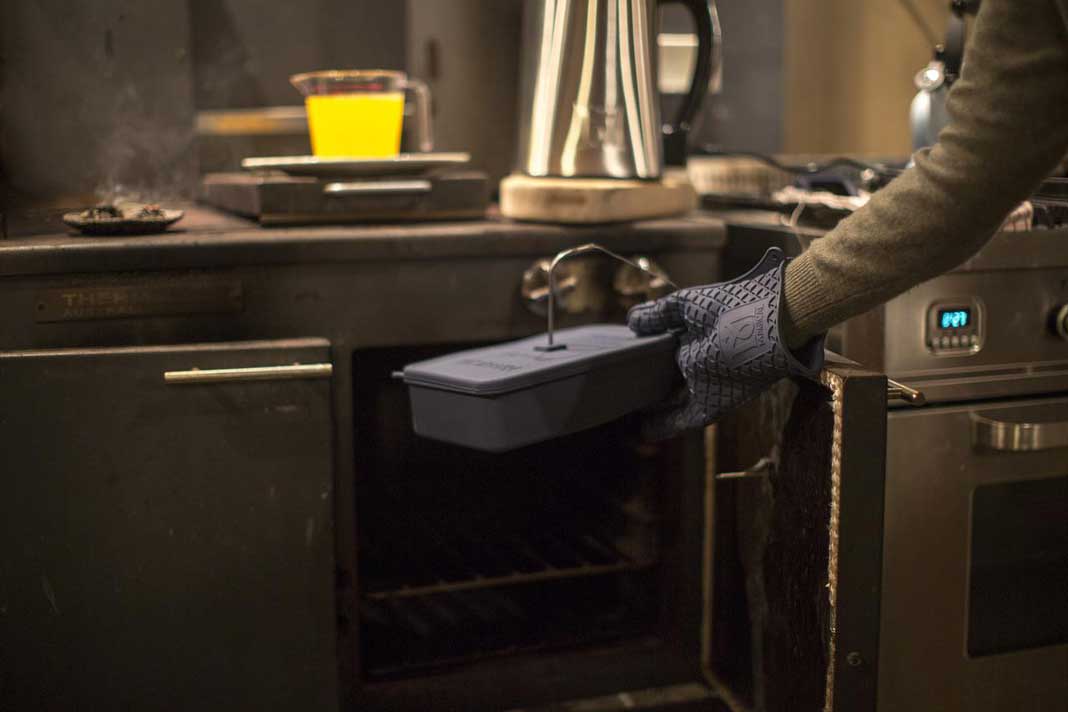I recently wrote about the different extraction methods available when producing CBD oil and the subject of decarboxylation inevitably came up when discussing using natural solvents.
It made me realise I hadn’t written an article discussing how you handle the decarboxylation process and why you do it, so I wanted to dive deeper into this subject.
What Is Decarboxylation?
Decarboxylation involves heating up hemp in order to activate the compounds. Decarboxylation is the process of releasing carboxyl from the molecule through a heated chemical reaction, hence why it is nicknamed ‘decarbing’.
Why Decarb Your Cannabis?
Before you heat up the cannabis, the cannabinoids are in their acidic form, whereas through the decarboxylation process their chemical make-up transitions, such as CBDA becoming CBD or THCA becoming THC.
The reality is that these non-acidic versions tend to work better with our bodies, meaning we get much greater results when heated compared to in its natural form.
It should also be highlighted that THCA is not intoxicating, it is the process of heating it, turning it into THC, which leads to the ‘high’.
I want to highlight that it isn’t just edibles that you will want to decarb for, if you’re making a topical treatment then you will also have to go through this process.
How Do You Decarboxylate CBD?
While you can wait for time to naturally decarb your flower, the quickest and most efficient method is to heat it up.
You will want to break the flower up into smaller parts and sprinkle it onto an oven dish, then cover it with aluminium foil.
Preheat your oven to 110C (230F), so not very hot, for five minutes, before placing the cannabis in the oven for approximately 40 minutes, depending on the quantity on your oven dish.
I would recommend taking the cannabis out of the oven after 20 minutes and moving the pieces around, to make sure they’re cooked evenly through, before putting them back in for the remaining 20 minutes.
There we are, voila, we have just decarbed the bud, so now we can move on to the infusion stage.
It’s important to remember that, following much research, people have found that cannabis has a magic temperature at which it should be heated, as highlighted earlier. Some have found it to be slightly lower than the 110C I mentioned, going for 105C, but the reality is that you should keep it at this temperature and allow it to slowly cook.
Don’t be tempted to put the temperature up to ‘speed up the process’ as all you will do is damage your cannabis and tarnish the end results.
If you’d like to learn more, I’d recommend reading this study on the decarboxylation process.
When Will I Need To Decarb Cannabis?
If you’re planning on making an edible at home, then the decarboxylation process is critical in order to yield the greatest results.
I have heard of a number of people cooking with cannabis, not understanding why the taste was off and the results were ineffective, not realising that they had forgotten to heat the cannabis at the start.
I wrote a guide on how to make cannabutter, which has been read over 15,000 times, with cannabutter making the base for plenty of fun edible recipes, but decarboxylation is the key to getting it right.
Heating Methods
I have discussed the oven, as this is by far the best method for heating cannabis for the vast majority of reasons why you might want to, such as for creating edibles.
However, this isn’t the only method and other ways of heating could help depending on what you’re hoping to achieve.
For example, smoking cannabis is an efficient way of releasing the active compounds, however this process is known to waste a lot of the cannabis. Of course, most people know this method for ‘smoking weed’.
Another method is through boiling cannabis…Yes, you heard me right. This will simply involve boiling water with the cannabis and then keeping it heated at a consistent temperature for a similar period of time to oven baking, around 40-60 minutes.
You might be wondering why it still needs to be heated for so long, this is because it takes a good while for the COOH bond to break down, so you need to be patient.
There are also a number of dry herb vaporisers on the market nowadays, which are built to heat your cannabis at the perfect temperature, converting them into vapour that can be inhaled. This is a much more preferred method to smoking as the results tend to be vastly greater.
How Can I Tell If My CBD Product Has Been Decarbed?
Almost all CBD products sold on the market will already have gone through the decarboxylation process, unless they directly state that they’re in their raw state.
The brands don’t expect you to heat up most of the products, they know you want the finished piece. However, if you’re unsure, you can always check the lab report. I highlighted earlier that before it is decarbed, you will see the acidic forms, so you should see CBDA, CBGA, THCA etc in high quantities.



